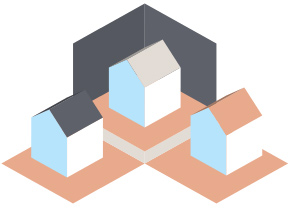 Use these expert tips to protect your home. Learn how to keep the elements out and comfort in, either by simple DIY or by employing a specialist roofer such as www.crossleyroofingservices.co.uk.
Use these expert tips to protect your home. Learn how to keep the elements out and comfort in, either by simple DIY or by employing a specialist roofer such as www.crossleyroofingservices.co.uk.
No matter where you live in the US, there will be times when you are going to endure harsh natural conditions, which is why waterproofing your home is important and the best place to start is at the top with your roof.
In the Southeast or Southwest, heat is the largest contributor to degrading the performance of your roof, whereas when you get into the Midwest and the Northeast, there’s heavy snow and severe temperatures to contend with.
There’s nothing more important about your home’s construction than the roof and the concern that it will perform well under a wide range of temperatures. No matter where you live, the roofing system needs to hold up to repeated seasonal conditions.
In climates with snow accumulation the roof is subject to ice buildups called ice-damming. This occurs when snow is on the roof and the sun comes out and starts to melt the lowest layer of snow “against” the roof. The water runs down the shingles into the gutters, and since the gutters aren’t warm, the water freezes again into ice cubes. These then build up in the gutters and downpipes and can prevent water from running off the roof. When this happens, the snow melt can work its way back up and under the shingles, leak into your attic, and then down into ceilings and walls.
To prevent leaking and damage from ice dams there are a couple of DIY tips from water repellent layers during roof replacement or new-build to insulation of the attic to prevent heat-loss and help minimise temperature fluctuations within the roof construction.
Your roofing system is also instrumental in fire protection. A significant number of homes are saved because they are made with fireproof materials. If you can, put a roof on that consists of non-flammable materials — steel metal roof, tiles or asphalt shingles, for example.
Approximately 80 percent of homes that are roofed today in the new construction area are done with fiberglass shingles. Fiberglass shingles are made from a thin layer of fiberglass surrounded and coated in weathering grade asphalt. Specially designed granules are then applied to the surface of fiberglass shingles, providing fire protection and color.
Roof vents are an integral part of the ventilation system and can contribute to the fire protection of your home. Ridge vents are recommended because they help prevent sparks from entering through these openings, though their main function is for ventilation of the roof.
